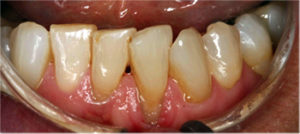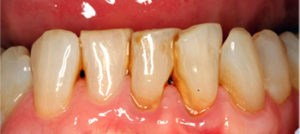At Hartwell Dentistry last week, we discussed gum recession, it’s causes and it’s symptoms. This week we will be discussing if there are options available to repair the damaged to your gums and what this is.
Gum recession can be uncomfortable and non aesthetically pleasing to many people. The question is, can something be done about it? Or am I forever going to be nursing a tooth along?
We often hear people dread the words recession and believe it’s a sign of age or ill health. As discussed in our previous blog, recession occurs due to several factors not relating to age.
What is gum grafting?
Gum grafting is a term that describes the process of simply replacing or adding back gum. This is a procedure that is conducted by dentists that complete extra courses and specialise in the gum area of the mouth. – Dr. Dana Horng at Hartwell Dentistry is one of these specialised dentists.
However, there are new treatment options and grafting tissue that can be used to help this discomfort and improve the overall appearance and health of the gums and mouth.
Below are images of before and after photographs of Gum Grafting.
Where do I start?
Gum recession as discussed in our previous blogs occur due to trauma, disease and anatomy. So with this in mind, if you are carefully brushing away plaque and preventing gum disease, you can prevent gum recession from occurring to the area that has been grafted.
The success of the surgery will always be dependent on how much supporting bone is available in the mouth and also the patient’s general health. This is assessed in an initial consultation with Dr. Dana Horng.
With all surgeries there needs to be an assessment to see if you are eligible. The most successful cases are based on whether the host is keeping their mouth healthy via rinses and post operative instructions from the dentist which does include not brushing the surgical site until 6 weeks after surgery.
Will gum grafting be painful?
Gum grafting is pain free, although swelling and bruising is common after this surgery. This surgery is completed under a local anaesthetic and can also be done under a sedation.
Prevention is easier than treatment, but it is fantastic to know that there are now procedures to help treat areas with recession in the mouth.





